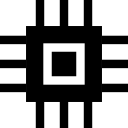Computer organization

Computer Organization[1]
How does a computer actually work? How do they transform what you type into a program that shows cute cat pictures?
Big ideas in computer organization[edit]
This lecture (quite long) is an excellent introduction to the deeper ideas presented on this page. I strongly advise you to watch this.
Information layer[2][edit]
Computer architecture[edit]
- Architecture of the central processing unit (CPU)
- Functions of the arithmetic logic unit (ALU)
- Control unit (CU)
- Registers within the CPU
- Primary memory
- Cache memory
- The machine instruction cycle
Secondary memory[edit]
Operating systems and application systems[edit]
Simple logic gates[edit]
Textbook pages[edit]
- I strongly recommend "But how do it know" by J. Clark Scott for a wonderful treatment of this topic
What do you absolutely need to know about this?[edit]
- [[Outline the architecture of the central processing unit (CPU) and the functions of the arithmetic logic unit (ALU) and the control unit (CU) and the registers within the CPU. Level 2
- Describe primary memory . Level 2
- [[Explain the use of cache memory. Level 3
- [[Explain the machine instruction cycle. Level 3
- [[Identify the need for persistent storage. Level 2
- [[Describe the main functions of an operating system. Level 2
- [[Outline the use of a range of application software. Level 2
- [[Identify common features of applications. Level 2
- [[Define the terms: bit, byte, binary, denary/decimal, hexadecimal. Level 1
- [[Outline the way in which data is represented in the computer. Level 2
- [[Define the Boolean operators: AND, OR, NOT, NAND, NOR and XOR. Level 1
- [[Construct truth tables using the above operators. Level 3
- [[Construct a logic diagram using AND, OR, NOT, NAND, NOR and XOR gates. Level 3